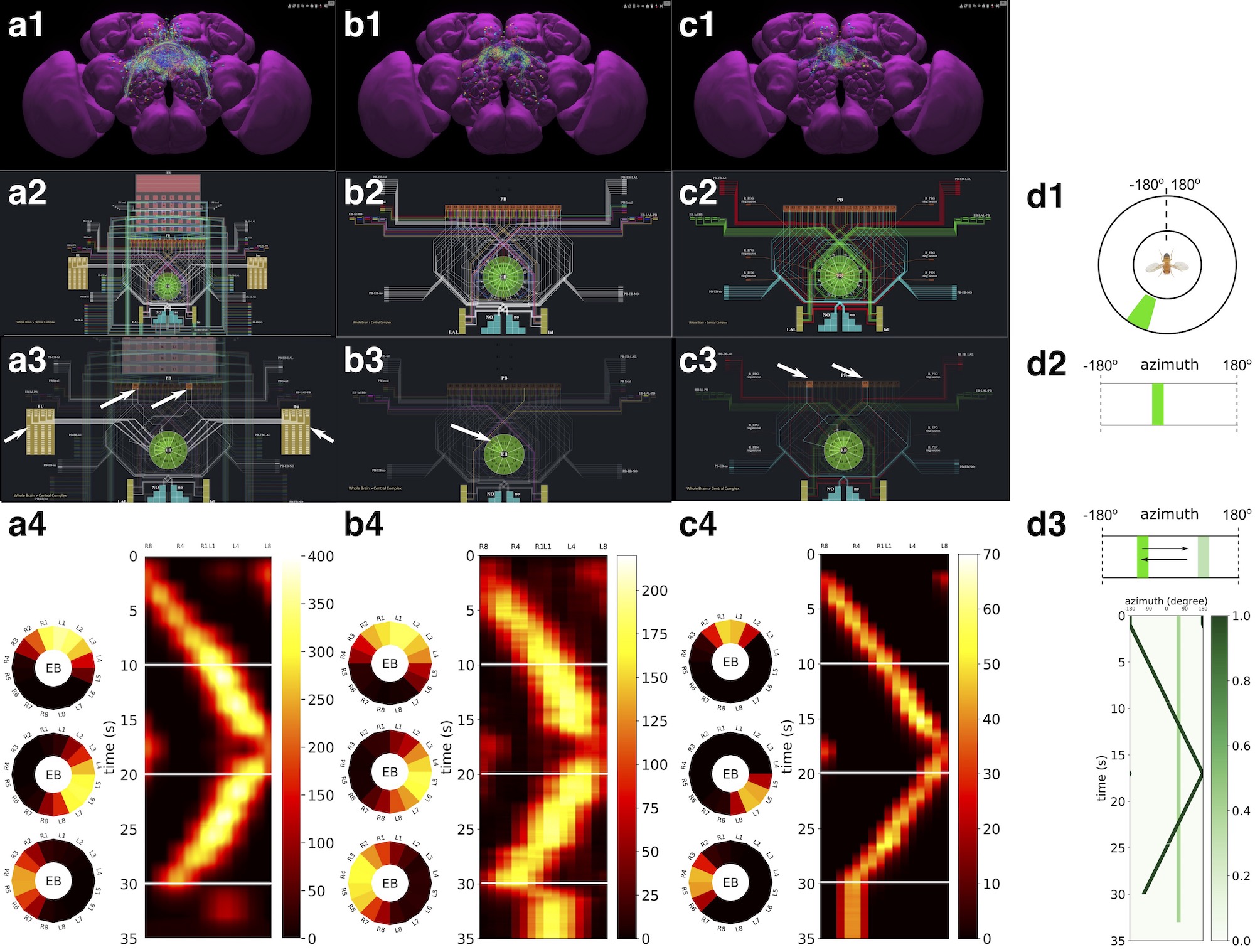The Functional Role of the Central Complex of the Fruit Fly Brain
The Central Complex plays a key role in the integration of sensory information with the Drosophila navigation control system.
Generating Executable Models of the Drosophila Central Complex
We have created an interactive web application that enables simultaneous graphical querying and construction of executable models of the CX neural circuitry based upon currently available information regarding the geometry and polarity of the arborizations of identified local and projection neurons in the CX.
- Lev E, Givon and Aurel A. Lazar, Generating an Executable Model of the Drosophila Central Complex, Neurokernel Request for Comments, Neurokernel RFC #6, May 2016.
- Lev E, Givon, Aurel A. Lazar and Chung-Heng Yeh, Generating Executable Models of the Drosophila Central Complex, Frontiers in Behavioral Neuroscience , May 2017.
- Aurel A. Lazar, Tingkai Liu, Mehmet K. Turkcan, and Yiyin Zhou, FlyBrainLab: Accelerating the Discovery of the Functional Logic of the Fruit Fly Brain in the Connectomic and Synaptomic Era, eLife 2021;10:e62362, February 2021.

Analysis, evaluation and comparison of three models of CX published in the literature. (a1–a4) Model A (Givon et al., 2017), (b1–b4) Model B (Kakaria and de Bivort, 2017), (c1–c4) Model C (Su et al., 2017).
(a1, b1, c1) Morphology of the neurons visualized. Displayed number of neurons in: (a1) 366, (a2) 87, (a3) 54.
(a2, b2, c2) Neuronal circuits depicted as abstract interactive circuit diagrams. Number of neurons in the diagram: (b1) 348, (b2) 60, (b3) 56.
(a3, b3, c3) When a single vertical bar is presented in the visual field (d1/d2), different sets of neurons/subregions (highlighted) in each of the models, respectively, receive either current injections or external spike inputs.
(a4, b4, c4) The mean firing rates of the EB-LAL-PB neurons innervating each of the EB wedges of the three models, in response to the stimulus shown in (d3). Insets show the rates at 10, 20, and 30 s, respectively, overlaid onto the EB ring.
(d1) A schematic of the visual field surrounding the fly.
(d2) The visual field flattened.
(d3) Input stimulus consisting of a bar moving back and forth across the screen, and a second fixed bar at 60˚ and with lower brightness.
In the video below, we demonstrate the interactive capabilities of the three models side-by-side, including the visualization of the morphology of CX neurons and the corresponding executable circuits, user interaction with the circuit diagram revealing connectivity pattern, and the execution of the circuit. The visual stimulus depicted in (d3) was presented to each of the three models.
Open source code and documentation is available as part of the Central Complex Circuits Library.
The Functional Logic of the Central Complex
- Aurel A. Lazar, Shashwat Shukla and Yiyin Zhou, Generating Wiring Diagrams of Local Processing Units of the Drosophila Central Complex, Neurobiology of Drosophila, Cold Spring Harbor Laboratory, October 3 - 7, 2023.
The Bionet Group is supported by grants from
 |
 |
 |
 |